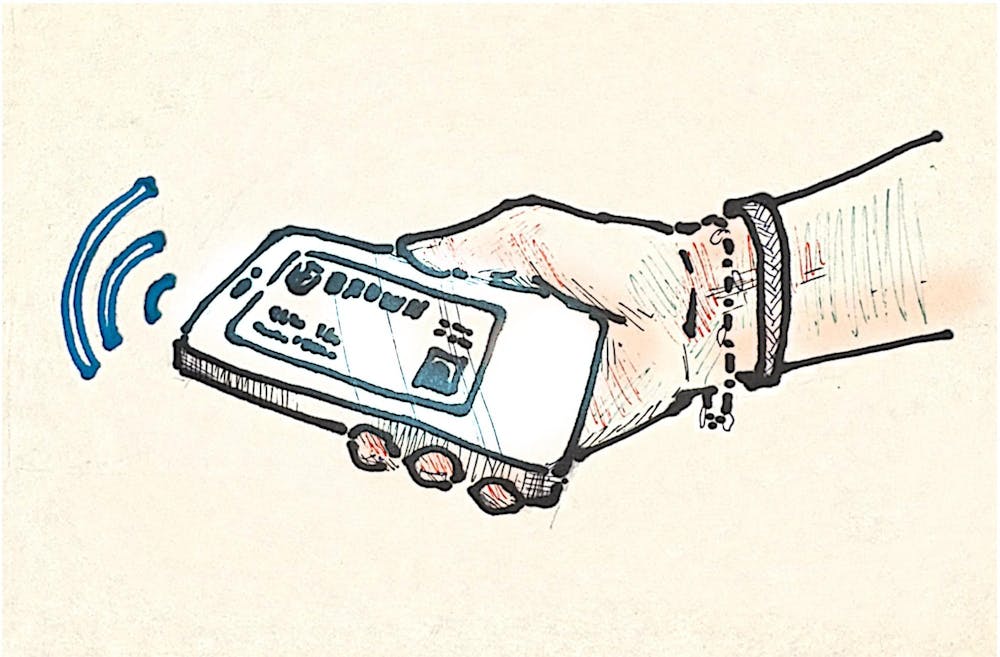In April 2022, the University announced that students would soon be able to access a virtual version of their Brown IDs on their smartphones, allowing them to enter dining halls, use recreational facilities and board the Brown Shuttle. Nearly three years later, this system has yet to be implemented.
But virtual IDs, while indefinitely postponed, remain a possibility at Brown, according to Don Rogers, assistant chief information officer for information technology support and customer experience.
At the time of the initial announcement, the Office of Information Technology and Brown Dining Services conducted testing to gauge the viability of the virtual system, Rogers wrote in an email to The Herald. But their testing revealed several obstacles to implementation.
“The technology at the time did not meet the expectations of students,” Rogers wrote, adding that the virtual ID was “likely to make the lines longer at Dining Services.”
Student feedback played a major role in the University’s decision not to move forward with implementation in 2022, according to Rogers.
While students preferred to simply tap a “chip-enabled ID card or their smartphone” to access Brown services and facilities, the existing virtual infrastructure would have required students to download and open “a mobile app to display a barcode, which would then be scanned optically at the point of service,” he wrote.
When testing the existing infrastructure, the OIT and Dining Services found that the system “was less reliable, took students longer than swiping a card and presented a potential security concern,” as students’ identifying information would be displayed in a “static barcode,” Rogers wrote. To meet students’ expectations, the University would have had to install completely new sensors for a variety of services, which would have been a “major investment,” he added.
Sarah Latham, executive vice president for finance and administration, emphasized that the introduction of any new service at Brown must “improve the student experience.” Moving forward with the virtual ID system as originally planned would not have enhanced student life at Brown, Latham added.
The OIT and Dining Services announced the virtual ID as one feature of the University’s transition to Atrium, a cloud-based platform that has allowed students to track Bear Bucks, meal plans and MyPrint balances since 2022. But the virtual ID aspect of this program was never implemented.
With the shift to Atrium, Brown also hoped to implement a mobile ordering platform at the Blue Room, per the April 2022 announcement. But like the virtual ID, this plan was indefinitely postponed.
After testing a vendor partnership to offer mobile ordering at the Blue Room, Dining Services “decided not to proceed with mobile ordering based on their available service capacity,” Rogers wrote.
Christelyn Larkin ’26 said she would “love it” if a virtual ID were implemented. “I’m always losing my ID,” she said, adding that “it would be really nice” to have a tap system.
She also noted that the magnetic strip on her current ID card is fading, forcing her to swipe multiple times to enter facilities. “Cards just get old,” she said. “I think it would be nice to have (the ID) online because it doesn’t deteriorate.”
“A lot of people forget their ID card, but in this day and age, no one forgets their phone,” Theo Coben ’28 said in an interview with The Herald. He also suggested the virtual ID could be expanded to dorm room access, which could reduce students’ need to replace lost keys.
But students are also cautious about replacing their physical card entirely.
Austine Zhang ’26 said they would like to have both a physical and virtual ID in the event that their cell phone runs out of battery.
Larkin and Coben also said they preferred to have access to both.
While there is no official timeline for a virtual ID rollout, the University is still planning for the possibility of implementing them in the future. We are “installing tap-compatible hardware whenever we can when we replace card-swipe sensors for normal maintenance,” Rogers wrote.
“As we look to any potential service improvements, we will continue to be guided by a commitment to providing a high ease of access when students use University services,” he added.





